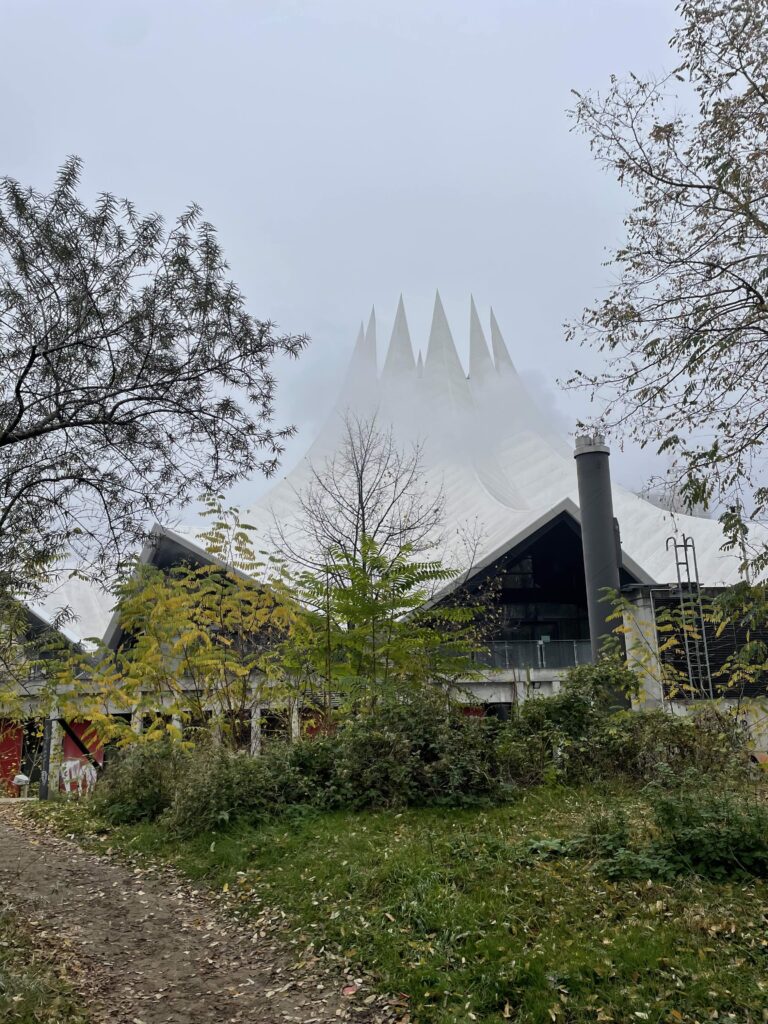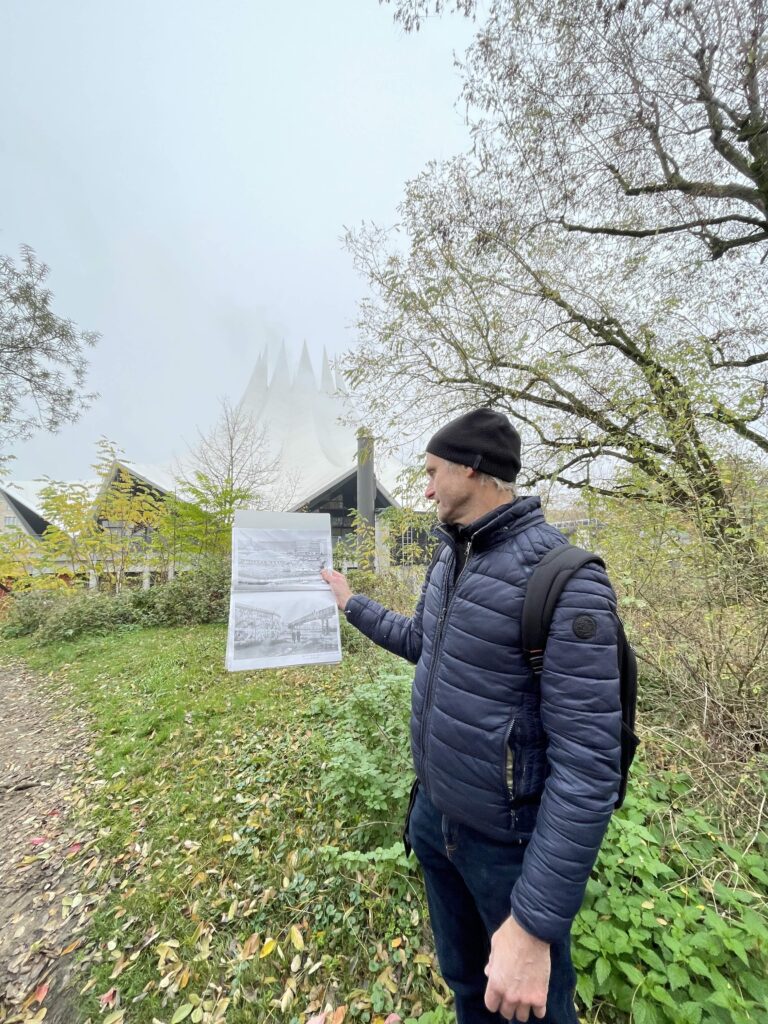
Looking south from Potsdamer Platz towards Tilla-Durieux-Park, the site of the former Potsdamer Bahnhof which was GDR property until 1972, then cleared from wild plants and kept empty for the future planning of a highway connection between Schöneberg and Wedding. It was here where in the early 1980s the Tempodrom circus tent was located, later the wasteland became famous for a huge fleemarket, the so called Polenmarkt. The „Rasenskulptur”, that constitutes the Tilla-Durieux-Park, designed by DS Landschaparchitecten and completed in 2003, is a sad urban space of very little ecological value and of no use for cultural appropriation.


Short detour into the vast green „Block 6″ backyard between Bernburger Straße and Dessauer Straße, an eco project of IBA 1987: a constructed wetland for sewage water treatment through plants.



Today’s Tempodrom builds the background to our entry to Elise-Tilse-Park which covers the southern part of former Anhalter Bahnhof. The area has remained untouched for decades, with rails and platforms overgrown.

Last stop of the walk: The information panels in the center of Gleisdreieckpark which document the significant work of local initiatives for preserving the former railway facilities and their participation in the implementation of the park. The planned construction of several corporate highrises („Urbane Mitte”) right behind the fence in the photograph puts the ecological and social balance of Gleisdreieckpark under threat.

At the seminar room in the Medienhaus we finally watched Josefina Buschmann’s „The Fallen Clouds” (2022) in order to connect the experience of the local instrastructes of the industrial age, that have turned into green spaces, to reflecting today’s global digital infrastructures and their material condition, like lithium mining in the north of Chile.
